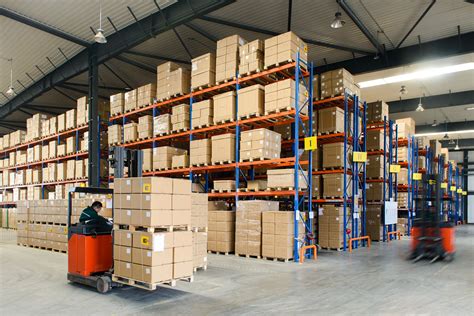Shipping Clothing from China: A Cost‑Effective Consolidated Method (2025 Guide)
Introduction
In 2025, importing clothing from China to Europe and North America presents both opportunity and challenge. With rising tariffs, logistics volatility, and tightened de minimis rules (the U.S. removed its exemption for Chinese parcels), parcel-by-parcel shipping has become both costly and cumbersome. The smartest solution? Consolidated shipping—combining multiple small orders in China and shipping as one bulk. This guide walks you through choosing the right modes, minimizing costs, protecting garments in transit, and navigating customs smoothly.

1. What Is Consolidated Freight for Clothing? 🧵
Clothing consolidation involves sourcing garments from multiple suppliers and shipping them to a consolidation warehouse in China—such as in Shenzhen, Guangzhou, or Shanghai. The forwarder then merges the goods into a single sea LCL (Less‑Than‑Container‑Load), shared FCL, or air pallet shipment destined for Europe or North America. This method reduces multiple customs entries, lowers per‑unit freight costs, and simplifies tracking. Consolidated freight is widely used among fashion importers, wholesalers, and online retailers.Agora FreightAgora Freight
2. Cost‑Effective Shipping Methods for Clothing
Ocean Freight: Sea LCL & Shared FCL
- Sea LCL: Ideal for 1–10 CBM clothing shipments, typically costs USD 60–90 per CBM, plus port, handling, and inland delivery fees.
- Shared or Full FCL: For ≥15 CBM, pay per container (20′ container: USD 2,000–2,500), divided among users. Great when importing collections or seasonal stock.Supplyia+5模特衣服制造商+5深国际物流+5
Air Freight & Express
- Standard Air Freight: For urgent apparel restocks (150–500 kg), expect USD 4–6/kg, with 7–10 days transit.
- Express Courier (DHL, UPS, etc.): Best when under 150 kg—approx USD 5–10/kg, delivery in 2–5 days. Faster but not scalable for larger volumes.下一航运通乐兴+2Freightos+2通乐兴+2
Comparing Cost & Speed
| Mode | Transit Time | Cost Estimate | Best For |
|---|---|---|---|
| Express Courier | 2–5 days | USD 6–10/kg | Samples or small urgent orders |
| Standard Air Freight | 7–10 days | USD 4–6/kg | Medium-volume, moderate urgency |
| Air Pallet (Consol) | 3–7 days | USD 4.5–5.5/kg | Multi-supplier fashion restocks |
| Ocean LCL | 25–35 days | USD 60–90/CBM | Small‑batch clothing restock |
| Shared/FCL | 30–40 days | USD 2,000–2,500 per container | Large seasonal inventory |
3. Why Consolidation Is Ideal for Clothing
- Tariff & Customs Savings: U.S. and EU now enforce duties on low-value parcel shipments. Consolidation allows one customs entry instead of multiple parcels.Agora Freight+8通乐兴+8通乐兴+8信任货运+13通乐兴+13Just China It+13泰晤士报+14Reuters+14Freightos+14Just China It+5Vogue Business+5通乐兴+5jingsourcing+2PRO China Freight+2Transload Services USA+2
- Voluminous but Light: Clothing occupies space but weighs little—consolidated sea LCL helps minimize dimensional charges.
- Protects Garments: Pallets or cartons mean less handling and fewer damages to delicate fabrics.
4. Detailed Cost Comparison: Clothing Example
Scenario: 3 CBM of assorted shirts (≈300 kg)
- Ocean LCL (3 CBM)
- Base: 3 CBM × USD 80 = USD 240
- Fuel/BAF (~15%): +36
- Port fees & THC/trucking/customs: ~ USD 140
- Total ≈ USD 416 → ≈ USD 1.39/kg or USD 138/CBM
- Air Pallet Consolidation (300 kg)
- Base: 300 kg × USD 4.8 = USD 1,440
- Fuel + AWB/SSF etc.: ~USD 250
- Customs/inland: ~USD 60
- Total ≈ USD 1,750 → ≈ USD 5.83/kg
For non‑urgent shipments, sea consolidation delivers a 4× saving per kg.通乐兴+1深国际物流+1
5. Packaging & Protection Tips
- Use polybags or breathable garment covers to prevent humidity damage.
- Minimize void space with compression and densified packing to reduce CBM.
- Avoid over-packing boxes which may burst or be rejected at warehouses.
- Insist on warehouse photos before consolidation, including carton seals and stacking plan.
- Label clearly with “Fragile”, “Hangable Garments”, or “Keep Dry” as needed.
6. Customs, Duties & Compliance
- U.S. de minimis rule removed for Chinese parcels (effective May 2025)—each parcel incurs flat fees or import duties. Consolidation avoids multiple hit.Business Insider
- Section 301 tariffs may add 25‑30% on garment imports from China, depending on HS code. Consolidation helps ensure consistent HS classification across one entry.China Briefing
- Check EU’s upcoming €2 parcel flat fee for low‑value garments (<€150). Bulk consolidated shipments usually exceed this and enter under commercial terms.Vogue Business+2Business Insider+2thesun.ie+2
7. Step‑by‑Step Consolidation Workflow for Clothing
- Register with a trusted consolidator having English support and warehouses in your supplier region.
- Suppliers ship to the warehouse—tag parcels with your client code.
- Warehouse QC-inspects, tallies weight/CBM, takes photos, and preps pallets.
- Choose shipping mode: sea LCL, FCL, or air pallet depending on volume and urgency.
- Forwarder issues a Master BL/AWB, your House BL/AWB, plus packing list and commercial invoice.
- Export customs clearance is handled by the forwarder.
- Upon arrival, customs duties/VAT are paid once, and shipping cleared.
- Last-mile shipment delivered by local carrier.
- Audit freight invoice within 30 days to recover any overcharges.Just China ItReddit通乐兴通乐兴
8. Overcoming Common Challenges
- Supplier delivery miscoordination causing split batches—set a fixed delivery window.
- Incorrect volumetric weight declarations—keep accurate dimensional data.
- Customs delays due to wrong HS code—verify codes before shipment.
- Hidden storage or rework charges—agree terms on free days in advance.
- Tracking visibility gaps—ensure your provider gives proactive updates at each stage.
9. Future Outlook: Why Consolidation Remains Critical
- The EU is planning fare structure changes for low‑value parcels, potentially banning exemption entirely.Vogue Business
- Air-cargo capacity continues to be dominated by fast‑fashion giants like Shein, which raises costs and delays for SMEs. Consolidation allows flexibility for sea freight alternatives.thesun.ie+2Reuters+2Vogue Business+2
- Ocean capacity surplus may drive rates down further—sea LCL becomes even more attractive.Reuters
10. Final Checklist: Consolidated Clothing Shipping
- Forecast monthly CBM / weight
- Align supplier deliveries to consolidate warehouse
- Request consolidation cut‑off time and free storage period
- Choose mode: sea LCL for cost, air pallet if urgent
- Confirm insurance and load photography
- Review tracking process and invoice audit tools
- Verify HS codes and duties before customs submission
- Monitor tariff deadlines—lock rates early to avoid spikes

